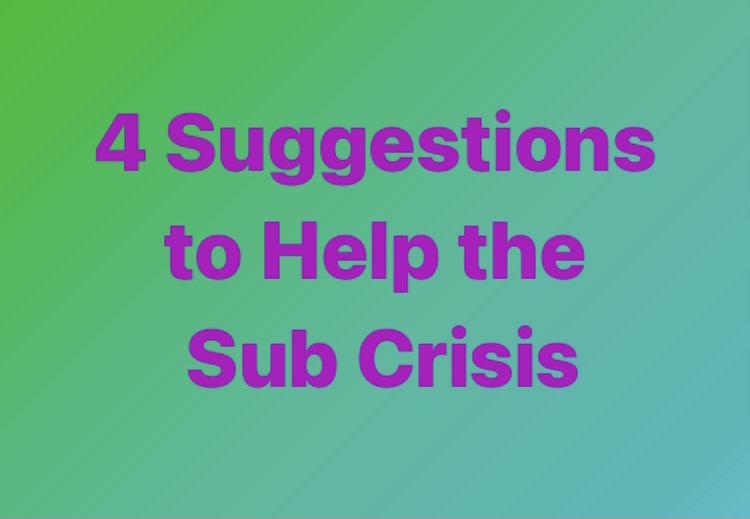Thankfully, the room had an entire wall of windows, so it didn’t matter that I couldn’t find the light switch.
As the students arrived, they rattled off dozens of questions.
I am uncertain if all of them made their way to their assigned seats ever.
About 35 minutes into their English lesson, a young student, maybe 3 ft 5 inches, calmly approached me with his mouth so full of blood, I thought it was a prank.
“Timmy threw a pencil at me, and it hit my tooth.”
Again, for the amount of blood, his calmness was actually unnerving.
I sent the poor little guy to the nurse. Upon his return, I found out the school nurse was only there 2 days a week — and this wasn’t one of them.
No one told me how to handle the bleeding-from-projectile-pencil-without-a-school-nurse game plan at substitute teacher orientation, but somehow I got through my first subbing job, and somehow the kid was alright.
I was reminiscing about my time as a substitute teacher recently because, like Caitlin Gawlowski pointed out on her blog this month, we have a sub shortage here in Arizona (and perhaps the whole nation).
I was a substitute in the state of Florida, where substituting was a bit different than here. I wondered if some of these differences could help us here?
Undergraduate Junior and Seniors were able to be certified substitutes.
This was a way for me to get real experience to take back to my education classes; I was not doing as many projects based on hypothetical assumptions. Instead, I was taking authentic experiences into consideration in college.
This allowed me flexibility to sub some days some semesters, and different days during others.
This also allowed me to spend a day in each grade level K-12, as well as elective classrooms. It was valuable in my settling into teaching high school English. When I first started subbing, I thought I’d want to teach elementary school. After a few incidents with playgrounds and restroom emergencies, I happily moved my focus to secondary.
There were bonuses for subs who worked more.
We could make higher wages if we had to cover the same teacher for multiple days.
We could make monthly bonuses for being available, and on call most days of the month.
We make monthly bonuses for meeting subbing goals for quarters and semesters.
These bonuses helped us defer only “more steady” part-time jobs, so if there was concern that undergraduates were working minimally, this was a way to keep us focused on the district.
Working as a sub for a predetermined goal of days made us eligible for health insurance.
I think I’m building a case for why subbing felt more like a viable job with each bullet, but allowing committed people who lacked a teaching certificate, but had at least 30 credit hours opened the options up beyond just aspiring teachers for a myriad of life circumstances.
I was certified and on-call for each and every K-12 school in the county — not just a small district.
Of course, I had preferred schools I could flag, and I could turn down jobs that were too far away.
But this wide net of options meant that if I planned to wake up and be on-call, there was a very good chance I would get a call. (Probably not a problem for subs right now, but certainly used to be an issue in the past)
Schools were less worried about last minute sub needs, because the agency got someone there.
I’m not saying that any of these differences could “fix” the subbing shortage Arizona is facing per se; however, I am contending that there was merit to many of those ideas. I also would posit that these differences would make subbing more appealing to many, as well as broaden the application pool.
When will the paradigm shift happen? When will districts, and the state, bend to the needs of reality?
There certainly seems to be a need to do some problem solving now. And if I, a college Junior, who had never stepped foot in a first grade classroom, could figure out how to help a bleeding kid with zero training or a nurse, I would guess our districts and states can also figure this out as well.










Comments 2
My continued suggestion is always pay more, but I agree with bonuses for subbing a lot as well. My frustration this year has been that our sub jobs are getting picked up weeks in advance, and then dropped 2 days before, which leaves my colleagues scrambling to cover classes last minute. I’m not sure what’s happening to cause subs to drop: a better assignment, schedule changes, COVID? It’s all frustrating.
James, I think the ideas you point out here are great and would change the dynamic of the sub pool in most districts. I think this all points back to the base issue that our systems are not working and most systems are not changing. The personnel shortage is a systemic problem. It’s far reaching and quite complicated.
I do REALLY like the idea of getting a bonus and acquiring insurance for hitting a specific target. I think those two ideas, specifically, would make a significant impact on the depth and quality of our sub pools.